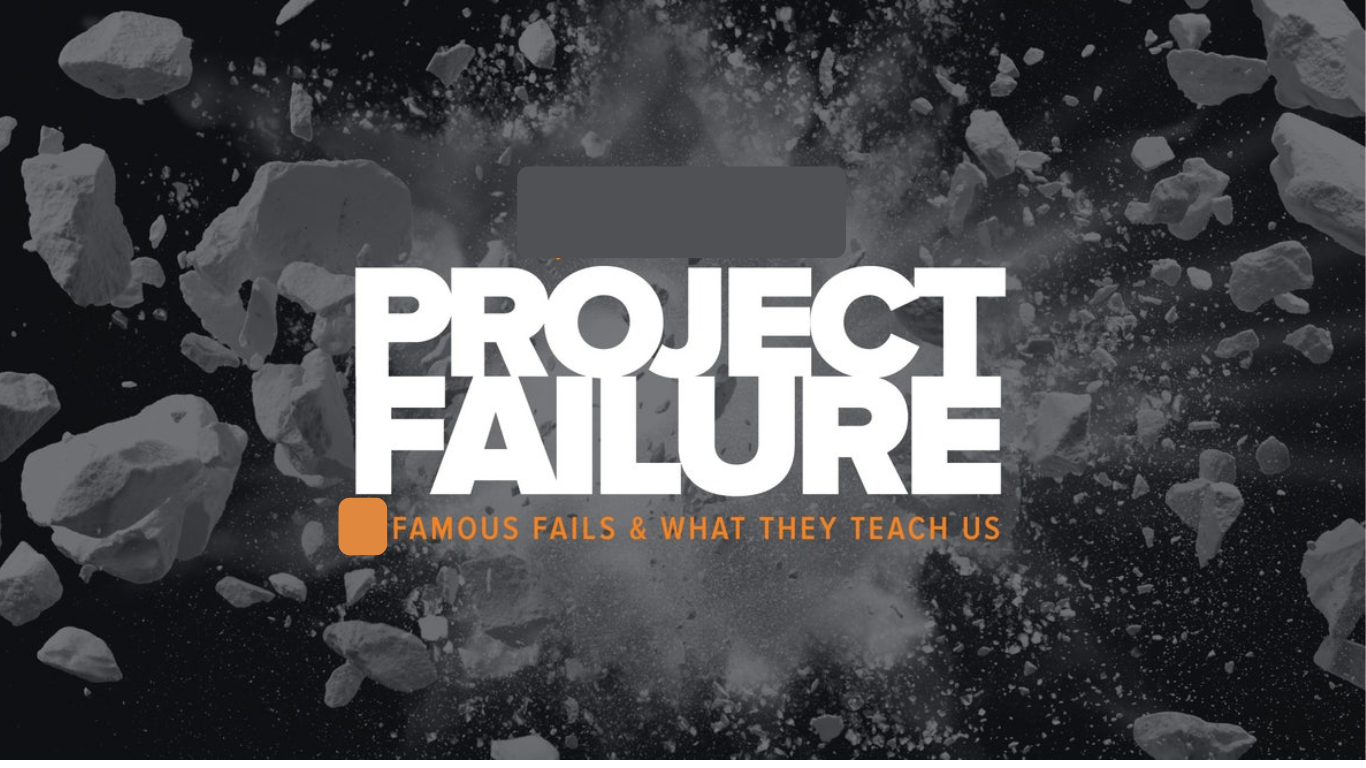Why Do Projects Fail and How To Avoid It?
It’s no secret that big projects can often be challenging to manage. With over half of them failing, according to some estimates, there’s clearly a severe issue at hand. The pitfalls are plenty, whether it’s due to gaps in planning, failure to execute tasks, or a lack of cohesion in bringing all the project pieces together. You might be wondering how often projects actually fail. What are the specific reasons for project failure? How can a project be prevented from failure? However, defining what constitutes a failure can be subjective and often depends on the stakeholders’ perspective.
While many projects meet their original goals, many still grapple with challenges such as scope creep, budget overruns, and timeline delays. For instance, only about a third of projects are completed on time and within budget. This begs the question – why do projects fail? Let’s delve into that.
What is a Project Failure?

The line between project success and project failure is a shade of gray, subjective to each project’s unique demands and goals. When you’re querying “why do projects fail” or more specifically “why do IT projects fail?”, you must first grasp what constitutes a project failure.
Typically, a project is deemed a failure if it doesn’t meet one or more of its primary objectives such as scope, timeline, or budget. However, project failure can also stem from more intricate issues. A bleak statistic reveals that only about a third of projects get completed on time and within budget, stumbling on obstacles like scope creep, budget overruns, or timeline delays.
With all this in mind, the quest to understand “why do projects fail in project management” or “why do software projects fail” requires breaking down each aspect of project execution. Issues arising from these aspects combined or individually can fast-track a project into the failure zone, even before the project instinctively flags off warning signs. So, while projects rely hugely on detailed planning crafting clear scopes, roles, and exhaustive timelines, failure can still occur.
When is a Project Considered a Failure?
Let’s deconstruct the term “project failure”. While it’s often linked to an unsuccessful outcome, it isn’t a black-and-white scenario. It centers on the inability to meet the primary objectives, like scope, timeline, or budget which often leads to the question, why do projects fail?
A project is marked a failure when it does not deliver what was required on time, within the agreed budget, or in a few instances, both. Something to note, a successful project can later transform into a failure if it doesn’t achieve the projected Return on Investment (ROI) targets.
Let’s consider some data to support these insights:
| Project Execution Metrics | Percentage of Firms
|
|---|---|
| Projects completed within budget | 43% |
| Completed projects on schedule | 29% |
| Organizations with a track record of project success | 47% |
| Organizations that mostly or always deliver | 40% |
After glancing through the table, you will see that a significant number of projects don’t meet their planned budgets or schedules, which directly connects to the question, why do IT projects fail?
But why do some projects fail and others succeed? Speaking specifically within the realm of project management, why do projects fail in project management? The repercussions of project failure can vary from light to heavy, spanning across domains affecting team morale and customer satisfaction or putting your entire organization at risk.
Reasons Why Projects Fail and Their Solutions

Understanding the pitfalls in project management is vital to steer projects to success. Here we’ve identified some common failures in project management—specifically software and IT projects—and their potential solutions.
1. Unclear Goals and Objectives
Did you know an estimated 37% of projects fail due to unclear project objectives? Set clear-cut goals for your team from the start. These will act as the roadmap to guide you and prevent projects from veering off track. Even if you’re dealing with software projects or general IT projects, clear objectives are crucial to success.
2. Lack of Resource Planning
Resources—whether human, financial, or material—are the backbone of any project. Without adequate resource planning, either your team ends up overworked or underutilized resulting in failed projects. Utilize effective task management tools to optimize resource allocation and prevent over or underutilization.
3. Poor Communication Across the Organization
The importance of communication in project management cannot be overstated. Poor communication can jeopardize up to 56% of a project’s budget. As the project manager, ensure that there are open communication channels within your team and with stakeholders. These practices are relevant to all sorts of projects, including software and IT projects.
4. Inadequate Stakeholder Management
A project without stakeholder support is a recipe for disaster. Stakeholders are a vital part of your project; they often finance it. Ensure you maintain open and honest communication with your stakeholders to keep them satisfied in your project.
5. Poorly Defined Project Scope
A poorly defined project scope can lead to scope creep—when a project’s requirements exceed its planned objectives. Be sure to outline the project scope from the onset clearly. This, you’ll find, is an excellent solution across all projects, be it in software development or complex IT projects.
6. Inaccurate Cost and Time Estimates
Cost and time overruns can be the death sentence for a project. Therefore, making accurate cost and time estimates right from project initiation is essential. Regular monitoring can also help keep the project on track.
7. Inadequate Risk Management
Every project carries inherent risks, and these are amplified in complex IT projects. However, projects fail when these risks are not adequately addressed. An effective risk management strategy is integral to project success.
8. Inexperienced Project Managers
Inexperience can lead to project failure. Ensure your project manager has the necessary skills and knowledge to lead the project. Prior experience can be invaluable, especially in similar IT or software projects.
9. Unrealistic Expectations
Unrealistic expectations can set a project up for failure even before it starts. This could be deadlines that are too tight, budgets that are too small, or task lists that are too long. As a project manager, you must manage these expectations effectively.
10. Monitoring and Controlling
Proper monitoring and controlling help detect problems early enough to implement corrective measures. Make this a vital part of your project management process, and you’ll avoid many potential pitfalls.
What Can Be Done To Minimize Project Failures?

While pondering on the question, “why do projects fail?“, it’s crucial to explore meaningful solutions. Generally, the success of a project essentially hinges on planning, identifying potential loopholes, and allocating resources efficiently. Setting sensible expectations, tracking project progress, frequent communication, and choosing the correct methodology can also greatly impact project outcomes.
Plan Diligently
Indeed, planning happens to be the backbone of any project. Comprehensive planning demands that you consider every conceivable aspect of the project, such as the risk factors, estimated costs, task durations, and potential roadblocks. A survey revealed, two of the top ten reasons listed for project failure were too many project changes and the scope of the project changing during the project. Dedicating an ample amount of time to meticulous planning can truly steer projects in the right direction.
Identify Loopholes
Successful project management is synonymous with efficient risk management. It enables project managers to detect and analyze potential hindrances that may arise during the progress of a project. Ineffectual risk management can lead to major scope creep, which can be detrimental to a project’s success. Hence, identifying and addressing such loops in the project’s lifecycle can help cushion the impact.
Check Your Resources
Management of resources, more specifically, project funding, is a key determinant of whether a project would see the light of day. For instance, the non-materialization of the Garden Bridge project in London was due largely to inadequate funding. Without satisfactory funds, it becomes exceedingly challenging to meet project objectives and satisfy clients. Therefore, make sure that funding levels are determined at the project planning stage.
Set Realistic Expectations
Delving into why IT projects fail, we find that unrealistic objectives and goals can be a project’s doom. Overburdening team members with tasks that are beyond their ability may end up complicating the process. Thus, it’s crucial to accurately evaluate the strengths, skills, and competencies of each team member. This ensures that tasks assigned to them are within their capability, fostering confidence, and productivity.
Track Project Progress
To comprehend why software projects fail, we need to grasp the importance of tracking project progress. Monitoring helps ensure that the project’s objectives are being met within the predefined constraints of time and cost. By regularly tracking project progress, project managers can promptly address deviations and make necessary amendments.
Communicate Well, Communicate Often
Healthy and frequent communication among all stakeholders fosters a sense of cooperation and understanding. Be it progress reports or issues that warrant immediate attention, they should be communicated promptly. Good communication aids in managing expectations by keeping everyone involved on the same page.
Use the Correct Methodology
Finally, picking the appropriate project methodology can significantly dictate your project’s success rate. The choice of methods should align with the nature, complexity, and size of the project. Understanding that good project management blends traditional methods and contemporary agile practices is pivotal. Choosing an unsuitable project management method can potentially steer the project towards failure.
Famous Project Failures (& what you can learn from them)

Understanding why projects fail is critical in avoiding the same mistakes in the future. Now let’s delve into some notorious project blunders and unravel vital lessons from each.
1. Airbus A380
Remember the time when the Airbus A380 – the world’s largest passenger airliner – was nearly grounded? The issues primarily stemmed from dispersed teams. Teams spread across Germany, France, Spain, and the UK struggled with compatibility as they bafflingly utilized different CAD programs. This led to a budget overflow from the initial projected development cost of $11.3 billion in 2000 to an astonishing $25-30 billion in 2017. This tale teaches us how significant it is to maintain standardization and effective communication among all teams.
2. Knight Capital
When deadlines are steep and anxiety creeps in, massive faults like what happened to Knight Capital can occur. Engineers of Knight Capital faced a daunting one-month deadline to modify their software to fit a new trading environment. Consequently, a test program went live by mistake, executing over 4 million trades in 154 stocks in little time. This misstep resulted in the company suffering irreparable financial damages. It’s crucial here to not impose unrealistic timelines and ensure an open environment for your team to voice concerns and pressures.
3. The Garden Bridge
The Garden Bridge, an ambitious yet novice project, never came to be. This pedestrian bridge planned over the River Thames faced the all-too-common project failure cause of lack of funding. Despite investing in a pricey website and preparatory work, the actual construction never kicked off due to over-optimism and unrealistic expectations. This failure serves as a glaring reminder of the need for diligent planning and realistic goal setting in any project.
4. Ford Edsel
The ill-fated launch of Ford’s Edsel is a classic case of fixing what isn’t broken. In an attempt to better rival Pepsi, Coca Cola introduced a new recipe only to revert to the original formula after poor sales. The disastrous venture cost Coca Cola financially and taught a lesson for the ages – if it isn’t broken, don’t fix it. This case illustrates the importance of understanding market needs before committing to drastic changes.
Conclusion
Project failures can be costly and damaging. From the Airbus A380’s budget overrun to the financial losses of Knight Capital, it’s clear that effective management is crucial. Remember, success isn’t just about avoiding failure but learning from it. So, as you embark on your next project, keep these insights in mind. Ensure standardization, foster effective communication, set realistic timelines, plan diligently, and understand your market. In doing so, you’ll be well-equipped to steer your project towards success.
Frequently Asked Questions
Q1. What lessons can be learned from famous project failures?
From the discussed failures, it’s clear that establishing a well-defined objective, maintaining clear communication, adopting a realistic timeline, focused planning, and understanding the market needs can minimize project failure chances.
Q2. What caused Airbus A380’s budget overrun?
The budget overrun for the Airbus A380 was primarily caused by dispersed teams. This led to miscommunication, which delayed the project and significantly increased costs.
Q3. What led to Knight Capital’s financial losses?
The financial losses of Knight Capital stemmed from a rushed software modification. Due to an urgency to meet the deadline, the modification was carried out hastily, leading to a loss of $440 million.
Q4. Why did The Garden Bridge project fail?
The failure of The Garden Bridge project was mainly due to a lack of funding. Despite significant planning and some initial fund allocation, the project couldn’t secure additional funds necessary to complete construction.
Q5. What led to Ford Edsel’s unsuccessful product launch?
Ford Edsel’s unsuccessful product launch was attributed to the lack of a comprehensive understanding of market needs. The product was not what the market desired, leading to its ultimate failure.
Q6. What are some identifiable signs of a failing project?
Some signs of a failing project include unclear project objectives, a lack of resources, poor communication, delays in schedule, and a lack of transparency.
Q7. How can future project failures be prevented?
Prevent project failures by establishing clear goals, managing resources efficiently, ensuring good communication, setting realistic timelines, and understanding the market’s needs and desires.

Leave a Reply